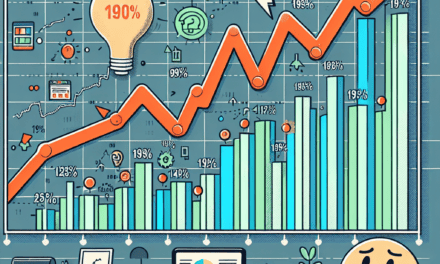“Solar Slump: Market Clouds Over First Solar, Sunnova, and Plug Power”
Introduction
In recent market developments, solar and energy stocks have experienced a significant downturn, with major players like First Solar, Sunnova, and Plug Power facing notable declines. This downturn reflects broader challenges within the renewable energy sector, as investors react to a combination of factors including fluctuating energy prices, policy uncertainties, and shifting market dynamics. The plummet in stock values underscores the volatility and sensitivity of the renewable energy market to external economic and regulatory influences, raising questions about the future trajectory of these companies and the sector as a whole.
Impact Of Market Volatility On Solar And Energy Stocks
The recent downturn in the stock market has had a pronounced impact on the solar and energy sectors, with companies like First Solar, Sunnova, and Plug Power experiencing significant declines in their stock prices. This volatility can be attributed to a confluence of factors, including fluctuating energy prices, changing government policies, and broader economic uncertainties. As investors grapple with these challenges, the solar and energy sectors are facing increased scrutiny, raising questions about their long-term viability and growth potential.
To begin with, the volatility in energy prices has played a crucial role in the recent decline of solar and energy stocks. As traditional energy prices fluctuate due to geopolitical tensions and supply chain disruptions, renewable energy companies are finding it difficult to maintain competitive pricing. This has led to a decrease in investor confidence, as the profitability of these companies becomes less predictable. Furthermore, the global push towards renewable energy has been met with resistance in some regions, where fossil fuels remain a dominant energy source. This resistance has further complicated the market dynamics, making it challenging for solar and energy companies to secure a stable foothold.
In addition to energy price fluctuations, changing government policies have also contributed to the market volatility affecting solar and energy stocks. Governments worldwide are reevaluating their energy policies in response to climate change and economic pressures. While some countries are doubling down on their commitments to renewable energy, others are scaling back subsidies and incentives that have historically supported the growth of the solar and energy sectors. This inconsistency in policy direction has created an uncertain environment for companies like First Solar, Sunnova, and Plug Power, which rely heavily on government support to drive innovation and expansion.
Moreover, the broader economic uncertainties stemming from inflationary pressures and potential recessions have further exacerbated the challenges faced by the solar and energy sectors. As inflation rates rise, the cost of raw materials and production for solar panels and energy storage solutions also increases. This, in turn, affects the pricing strategies of companies, making it difficult for them to offer competitive rates to consumers. Additionally, the threat of a global recession looms large, prompting investors to adopt a more cautious approach. This has led to a shift in investment priorities, with many opting for safer, more traditional assets over the perceived risks associated with renewable energy stocks.
Despite these challenges, it is important to recognize the underlying potential of the solar and energy sectors. The global transition towards cleaner energy sources is inevitable, driven by the urgent need to combat climate change and reduce carbon emissions. Companies like First Solar, Sunnova, and Plug Power are at the forefront of this transition, developing innovative technologies and solutions that promise to revolutionize the energy landscape. While the current market volatility presents significant hurdles, it also offers opportunities for these companies to adapt and evolve, positioning themselves for long-term success.
In conclusion, the recent plummet in solar and energy stocks underscores the complex interplay of factors influencing the market. From fluctuating energy prices and changing government policies to broader economic uncertainties, these challenges have created a volatile environment for companies in the sector. However, the potential for growth and innovation remains strong, as the world continues to move towards a more sustainable energy future. As such, investors and industry stakeholders must navigate this volatility with a strategic focus, recognizing both the risks and opportunities that lie ahead.
Analyzing The Decline In First Solar’s Stock Performance
The recent downturn in solar and energy stocks has captured the attention of investors and analysts alike, with First Solar, Sunnova, and Plug Power experiencing significant declines. This trend raises questions about the underlying factors contributing to the slump and the broader implications for the renewable energy sector. First Solar, a prominent player in the solar industry, has been particularly affected, prompting a closer examination of its stock performance and the challenges it faces.
To begin with, First Solar’s stock decline can be attributed to a confluence of factors, both internal and external. Internally, the company has been grappling with production challenges and supply chain disruptions, which have hindered its ability to meet growing demand. These operational hurdles have not only affected First Solar’s output but have also led to increased costs, thereby squeezing profit margins. As a result, investor confidence has been shaken, contributing to the downward pressure on the company’s stock price.
Externally, the broader economic environment has also played a significant role in the decline of First Solar’s stock. Rising interest rates and inflationary pressures have created a challenging landscape for renewable energy companies, which often rely on substantial capital investments. Higher borrowing costs can deter investment in new projects, slowing growth prospects for companies like First Solar. Additionally, inflation can increase the cost of raw materials and components, further straining financial performance.
Moreover, the competitive landscape in the solar industry has intensified, with new entrants and existing players vying for market share. This heightened competition has led to pricing pressures, forcing companies to lower prices to remain competitive. For First Solar, this means that maintaining profitability while expanding market presence has become increasingly difficult. The company’s ability to innovate and differentiate its products will be crucial in navigating this competitive environment.
In addition to these challenges, policy and regulatory uncertainties have also contributed to the volatility in First Solar’s stock performance. While governments worldwide are increasingly committed to transitioning to renewable energy, the pace and nature of policy implementation can vary significantly. Changes in subsidies, tariffs, and other regulatory measures can have immediate and profound impacts on solar companies’ financial health. For instance, any reduction in government support for solar energy could dampen demand and adversely affect First Solar’s revenue streams.
Despite these challenges, it is important to recognize that the long-term outlook for the solar industry remains positive. The global push towards sustainable energy solutions continues to gain momentum, driven by the urgent need to combat climate change. As technology advances and economies of scale are realized, the cost of solar energy is expected to decrease, making it more accessible and attractive to consumers and businesses alike. For First Solar, this presents an opportunity to capitalize on the growing demand for clean energy solutions.
In conclusion, while First Solar’s recent stock performance has been disappointing, it is essential to consider the broader context in which these declines have occurred. The combination of internal operational challenges, external economic pressures, competitive dynamics, and regulatory uncertainties has created a complex environment for the company. However, with a strategic focus on innovation and adaptation, First Solar can potentially overcome these obstacles and emerge stronger in the evolving renewable energy landscape. As investors and stakeholders continue to monitor developments, the company’s ability to navigate these challenges will be critical in determining its future trajectory.
Factors Contributing To Sunnova’s Recent Stock Plunge
The recent downturn in solar and energy stocks has captured the attention of investors and analysts alike, with companies such as First Solar, Sunnova, and Plug Power experiencing significant declines. Among these, Sunnova’s recent stock plunge has been particularly noteworthy, prompting a closer examination of the factors contributing to this decline. Understanding these elements is crucial for stakeholders and potential investors who are navigating the volatile landscape of renewable energy investments.
To begin with, one of the primary factors influencing Sunnova’s stock performance is the broader market sentiment towards renewable energy stocks. Over the past few months, there has been a noticeable shift in investor sentiment, driven by macroeconomic factors such as rising interest rates and inflationary pressures. These economic conditions have led to a reevaluation of growth stocks, including those in the renewable energy sector, as investors become more risk-averse. Consequently, companies like Sunnova, which are heavily reliant on future growth projections, have seen their stock prices adversely affected.
In addition to macroeconomic influences, regulatory uncertainties have also played a significant role in Sunnova’s stock decline. The renewable energy sector is highly sensitive to government policies and incentives, which can significantly impact the financial viability of solar projects. Recent changes in policy direction, particularly in key markets such as the United States, have introduced a level of uncertainty that has made investors cautious. For instance, potential modifications to tax credits and subsidies for solar energy could alter the competitive landscape, affecting Sunnova’s long-term profitability and growth prospects.
Moreover, Sunnova’s financial performance has also contributed to its recent stock plunge. While the company has demonstrated strong revenue growth in recent quarters, concerns about its profitability and cash flow have persisted. Sunnova’s business model, which involves significant upfront costs for solar installations and long-term customer contracts, requires substantial capital investment. This has led to questions about the company’s ability to sustain its growth trajectory without compromising its financial stability. As a result, investors have become increasingly wary of the risks associated with Sunnova’s business operations.
Furthermore, competition within the solar energy sector has intensified, adding another layer of complexity to Sunnova’s challenges. The rapid advancement of solar technology and the entry of new players into the market have heightened competitive pressures. Sunnova must continuously innovate and adapt to maintain its market position, which can strain resources and impact profitability. This competitive environment has made it difficult for Sunnova to differentiate itself, contributing to investor concerns about its future performance.
Lastly, external factors such as supply chain disruptions and geopolitical tensions have also had an impact on Sunnova’s stock performance. The global supply chain for solar components has faced significant challenges, including shortages and increased costs, which have affected the entire industry. Additionally, geopolitical tensions, particularly those involving major solar component producers, have further exacerbated these issues. These external pressures have created an unpredictable operating environment for Sunnova, adding to the uncertainty surrounding its stock.
In conclusion, Sunnova’s recent stock plunge can be attributed to a combination of macroeconomic factors, regulatory uncertainties, financial performance concerns, competitive pressures, and external challenges. As the renewable energy sector continues to evolve, it is essential for investors to remain informed about these dynamics and consider their potential impact on companies like Sunnova. By doing so, they can make more informed decisions in an increasingly complex and volatile market.
Plug Power’s Market Challenges And Stock Price Drop
In recent months, the renewable energy sector has faced significant challenges, with solar and energy stocks experiencing notable declines. Among the companies affected, Plug Power has been particularly impacted, reflecting broader market trends and specific challenges within the hydrogen fuel cell industry. As investors reassess their positions in the renewable energy market, Plug Power’s stock price has seen a substantial drop, raising questions about the company’s future prospects and the overall stability of the sector.
Plug Power, a leading provider of hydrogen fuel cell solutions, has long been considered a pioneer in the transition towards cleaner energy sources. However, the company’s recent performance in the stock market has been less than stellar. Several factors have contributed to this downturn, including increased competition, supply chain disruptions, and shifting investor sentiment. As the renewable energy landscape evolves, Plug Power faces the challenge of maintaining its competitive edge while navigating these complex market dynamics.
One of the primary challenges confronting Plug Power is the intensifying competition within the hydrogen fuel cell industry. As more companies enter the market, Plug Power must differentiate itself through innovation and strategic partnerships. However, this is easier said than done, as competitors are also investing heavily in research and development to capture a share of the growing demand for clean energy solutions. Consequently, Plug Power must continuously innovate to stay ahead, which requires significant financial resources and a clear strategic vision.
In addition to competition, supply chain disruptions have also played a role in Plug Power’s recent stock price decline. The global supply chain has been under immense pressure due to various factors, including the COVID-19 pandemic, geopolitical tensions, and natural disasters. These disruptions have led to increased costs and delays in the production and delivery of key components, impacting Plug Power’s ability to meet customer demand and maintain profitability. As the company works to address these challenges, it must also contend with the broader economic uncertainties that continue to affect the renewable energy sector.
Moreover, shifting investor sentiment has further complicated Plug Power’s market position. In recent years, there has been a growing interest in renewable energy stocks, driven by increasing awareness of climate change and the need for sustainable energy solutions. However, as economic conditions fluctuate and interest rates rise, investors have become more cautious, leading to a reevaluation of their portfolios. This shift in sentiment has resulted in a sell-off of renewable energy stocks, including Plug Power, as investors seek safer, more stable investments.
Despite these challenges, Plug Power remains committed to its mission of advancing hydrogen fuel cell technology and expanding its market presence. The company has announced several strategic initiatives aimed at strengthening its position, including partnerships with major corporations and investments in new technologies. These efforts are designed to enhance Plug Power’s competitive advantage and drive long-term growth, even as the company navigates the current market turbulence.
In conclusion, Plug Power’s recent stock price drop reflects a confluence of factors, including increased competition, supply chain disruptions, and shifting investor sentiment. While these challenges are significant, they are not insurmountable. By focusing on innovation, strategic partnerships, and operational efficiency, Plug Power can position itself for future success in the rapidly evolving renewable energy sector. As the company continues to adapt to changing market conditions, its ability to overcome these obstacles will be crucial in determining its long-term viability and contribution to the global transition towards sustainable energy solutions.
Investor Reactions To The Plummeting Solar And Energy Stocks
The recent downturn in solar and energy stocks has sent ripples through the investment community, with notable companies such as First Solar, Sunnova, and Plug Power experiencing significant declines. This sudden drop has prompted a range of reactions from investors, who are now grappling with the implications of these developments on their portfolios and the broader market. As the renewable energy sector has been a beacon of growth and innovation, the recent plummet in stock prices has raised questions about the sustainability of this momentum and the factors contributing to the current market dynamics.
To begin with, the decline in solar and energy stocks can be attributed to a confluence of factors, including macroeconomic pressures, policy uncertainties, and shifting market sentiments. Investors have been closely monitoring the Federal Reserve’s monetary policy, as rising interest rates can increase the cost of capital for renewable energy projects, potentially dampening growth prospects. Additionally, geopolitical tensions and supply chain disruptions have further exacerbated the challenges faced by these companies, leading to increased volatility in their stock prices. Consequently, investors are now reassessing their positions, weighing the risks and rewards associated with maintaining or divesting their holdings in these stocks.
Moreover, the recent downturn has sparked a debate among investors regarding the long-term viability of the renewable energy sector. While some view the current dip as a temporary setback, others are concerned about the structural challenges that may hinder the sector’s growth. For instance, the reliance on government incentives and subsidies has been a critical driver of the renewable energy market. However, any changes in policy direction could have significant repercussions for companies like First Solar, Sunnova, and Plug Power. As a result, investors are keenly observing legislative developments and regulatory shifts that could impact the sector’s trajectory.
In light of these uncertainties, investor reactions have been varied. Some have opted to adopt a cautious approach, reducing their exposure to solar and energy stocks while waiting for clearer signals from the market. This strategy reflects a desire to mitigate potential losses while maintaining the flexibility to re-enter the market should conditions improve. On the other hand, more risk-tolerant investors view the current downturn as an opportunity to acquire shares at a discounted price, banking on the sector’s long-term growth potential. This perspective is underpinned by the belief that the transition to renewable energy is an irreversible trend, driven by global efforts to combat climate change and reduce carbon emissions.
Furthermore, the recent stock declines have prompted investors to diversify their portfolios, seeking exposure to other sectors that may offer more stable returns. This shift underscores the importance of a balanced investment strategy, particularly in times of market turbulence. By spreading their investments across different asset classes and industries, investors can better manage risk and enhance their chances of achieving favorable outcomes.
In conclusion, the plummeting of solar and energy stocks has elicited a range of reactions from investors, reflecting the complex interplay of factors influencing the market. As they navigate this challenging landscape, investors are weighing the potential risks and rewards associated with their investment decisions. While uncertainties remain, the ongoing evolution of the renewable energy sector continues to capture the attention of investors, who are keen to capitalize on its transformative potential. As such, the coming months will be critical in determining the future direction of solar and energy stocks, as well as the broader implications for the investment community.
Long-term Implications For The Renewable Energy Sector
The recent downturn in solar and energy stocks, particularly those of First Solar, Sunnova, and Plug Power, has raised concerns about the long-term implications for the renewable energy sector. This decline, while unsettling for investors, prompts a deeper examination of the factors contributing to this trend and its potential impact on the future of renewable energy. As the world increasingly shifts towards sustainable energy solutions, understanding these dynamics is crucial for stakeholders across the industry.
To begin with, the plummet in stock prices can be attributed to a confluence of factors, including macroeconomic pressures, policy uncertainties, and market competition. The global economic landscape has been marked by volatility, with inflationary pressures and interest rate hikes affecting investor sentiment. These economic conditions have led to a more cautious approach among investors, who are now reevaluating their portfolios and risk appetites. Consequently, sectors perceived as high-risk, such as renewable energy, have experienced a sell-off, impacting stock prices.
Moreover, policy uncertainties have further exacerbated the situation. While governments worldwide have pledged to support renewable energy initiatives, the implementation of these policies has often been inconsistent. Changes in government leadership or shifts in political priorities can lead to delays or alterations in renewable energy policies, creating an unpredictable environment for companies operating in this sector. This uncertainty can deter investment and hinder the growth prospects of companies like First Solar, Sunnova, and Plug Power.
In addition to economic and policy challenges, the renewable energy sector faces intense competition. As more companies enter the market, the pressure to innovate and reduce costs has intensified. While competition can drive technological advancements and efficiency, it can also strain profit margins and lead to market saturation. Companies that fail to differentiate themselves or adapt to changing market conditions may struggle to maintain their market share, further impacting their stock performance.
Despite these challenges, the long-term outlook for the renewable energy sector remains promising. The global push towards decarbonization and the transition to clean energy sources is expected to continue, driven by the urgent need to address climate change. Governments, corporations, and consumers are increasingly recognizing the importance of sustainable energy solutions, which bodes well for the sector’s future growth. In this context, the current downturn in stock prices may be viewed as a temporary setback rather than a reflection of the sector’s long-term potential.
Furthermore, technological advancements and economies of scale are likely to play a pivotal role in the sector’s evolution. As renewable energy technologies become more efficient and cost-effective, they will become increasingly competitive with traditional energy sources. This shift will likely attract more investment and drive further innovation, ultimately benefiting companies that can capitalize on these trends.
In conclusion, while the recent decline in solar and energy stocks such as First Solar, Sunnova, and Plug Power is concerning, it is essential to consider the broader context. The renewable energy sector is navigating a complex landscape of economic, policy, and competitive challenges. However, the long-term drivers of growth, including the global commitment to sustainability and technological advancements, remain intact. As the sector continues to evolve, companies that can adapt to these changes and leverage emerging opportunities are likely to thrive in the years to come.
Strategies For Investors Amidst Solar And Energy Stock Declines
The recent downturn in solar and energy stocks, particularly those of First Solar, Sunnova, and Plug Power, has left investors grappling with uncertainty. As these stocks plummet, it is crucial for investors to reassess their strategies and consider the broader implications of this decline. Understanding the factors contributing to this downturn is the first step in formulating a robust investment strategy. Several elements, including fluctuating government policies, supply chain disruptions, and changing market dynamics, have played a role in the recent decline of solar and energy stocks. For instance, shifts in government incentives and subsidies can significantly impact the profitability of solar companies. Additionally, supply chain issues, exacerbated by global events, have led to increased costs and delays in production, further affecting stock performance. These challenges underscore the importance of staying informed about industry trends and regulatory changes.
In light of these challenges, diversification emerges as a key strategy for investors. By spreading investments across a range of sectors and asset classes, investors can mitigate the risks associated with the volatility of solar and energy stocks. Diversification not only helps in cushioning the impact of sector-specific downturns but also provides opportunities to capitalize on growth in other areas. Moreover, investors should consider the long-term potential of the renewable energy sector. Despite current setbacks, the global push towards sustainable energy solutions remains strong. Governments worldwide continue to set ambitious targets for reducing carbon emissions, which bodes well for the future of solar and energy companies. Therefore, maintaining a long-term perspective can help investors ride out short-term volatility and benefit from the sector’s growth potential.
Another strategy involves closely monitoring company fundamentals. Investors should pay attention to financial health indicators such as revenue growth, profit margins, and debt levels. Companies with strong fundamentals are more likely to weather economic downturns and emerge stronger. For instance, First Solar’s focus on technological innovation and cost efficiency could position it well for future growth, despite current market challenges. Similarly, evaluating management effectiveness and strategic vision can provide insights into a company’s ability to navigate turbulent times.
Furthermore, investors should remain vigilant about emerging technologies and trends within the renewable energy sector. Innovations such as energy storage solutions, smart grid technologies, and advancements in solar panel efficiency hold the potential to drive future growth. By staying informed about these developments, investors can identify opportunities to invest in companies at the forefront of technological advancements. Additionally, considering environmental, social, and governance (ESG) factors can enhance investment strategies. Companies with strong ESG practices are often better positioned to manage risks and capitalize on opportunities in the evolving energy landscape. As investors increasingly prioritize sustainability, companies with robust ESG credentials may attract more investment, potentially boosting their stock performance.
In conclusion, while the recent decline in solar and energy stocks presents challenges, it also offers opportunities for strategic investors. By diversifying portfolios, focusing on long-term potential, analyzing company fundamentals, staying informed about industry trends, and considering ESG factors, investors can navigate the current downturn and position themselves for future success. As the world continues its transition towards sustainable energy, the renewable energy sector remains a promising area for investment, despite its inherent volatility.
Q&A
1. **What caused the plummet in solar and energy stocks?**
The decline was primarily due to rising interest rates, which increased borrowing costs and reduced the attractiveness of investing in renewable energy projects.
2. **Which companies were most affected by the stock plummet?**
First Solar, Sunnova, and Plug Power were among the companies that experienced significant declines in their stock prices.
3. **How did First Solar’s stock perform during the plummet?**
First Solar’s stock saw a notable decrease, reflecting broader market concerns about the renewable energy sector’s financial outlook.
4. **What impact did the stock decline have on Sunnova?**
Sunnova’s stock also dropped, as investors worried about the company’s ability to finance its growth amid higher interest rates.
5. **How did Plug Power’s stock react to the market conditions?**
Plug Power’s stock was hit hard, with investors concerned about the company’s future profitability and expansion plans.
6. **What broader market trends contributed to the decline in these stocks?**
The overall market trend of shifting away from high-growth sectors like renewable energy towards more stable investments contributed to the decline.
7. **Are there any long-term implications for the renewable energy sector from this stock plummet?**
While short-term challenges exist, the long-term outlook for renewable energy remains positive due to global commitments to reduce carbon emissions and transition to cleaner energy sources.
Conclusion
The recent decline in solar and energy stocks, including First Solar, Sunnova, and Plug Power, highlights the volatility and challenges facing the renewable energy sector. Factors such as fluctuating government policies, supply chain disruptions, and changing market dynamics contribute to investor uncertainty. Despite long-term growth potential driven by global shifts towards sustainable energy, these stocks remain susceptible to short-term market pressures. Investors should consider these risks while evaluating the sector’s future prospects.





